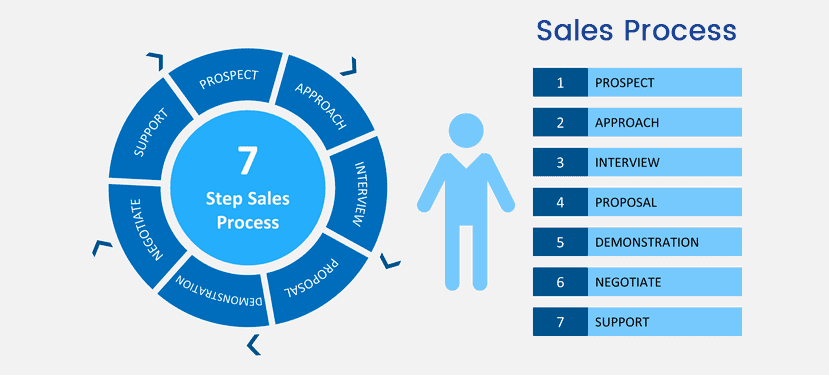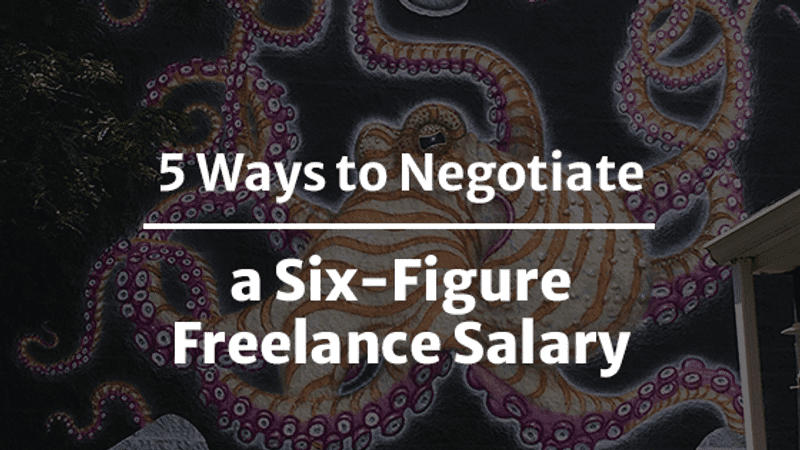Negotiating a higher salary (or rate) can be uncomfortable, but it’s a requisite for career satisfaction. Being a good negotiator is a success factor if you want to get ahead in your freelancing career. After all, who’s going to advocate for your business but yourself?
After hitting the six-figure mark during my second year of freelancing full-time, I have a lot of ideas for making bank.
I was fortunate to have had my dad as a business mentor and gained experience in the cutthroat sales department at Groupon, which honed my negotiation skills, but others need help with that aspect.
That’s why today, I’m giving you five straightforward tips I shared during the April 2018 Freelancers Union Spark event in Denver to help you negotiate a six-figure salary.
Let’s dive in.
Jump Ahead to a Specific Section:
1. Stop calling yourself a freelancer.
What service do you provide clients? And what does it help them achieve?
Instead of introducing myself as a “freelance writer,” I pitch clients my “SEO Content Writing” services for “helping them reach relevant prospects in search.”
As much as I hate to say it, the term “freelancer” has a lot of negative connotations — especially when it comes to charging what you’re worth!
2. Work back from your target income number.
Whether it’s six figures or something else you’re after, it will be challenging to reach that number without knowing the numbers it takes to get there.
First, you’ll need to account for days you’re not available to get work done.
Factor in:
- Weekends: that’s 100+ days on its own.
- Sick days: the average for a full-time worker is at least eight per year.
- Vacation: the standard is about 10 days off if you’ve worked there for one to five years.
- Holidays: the average employee receives 7.6 paid holidays per year.
From there, you need to factor in the costs of running your business as a freelancer, such as health insurance and setting aside money for taxes.
It also helps to benchmark what you’re charging based on other freelancers in your industry/at a similar level of expertise/influence. Ask your freelancer friends — or members of your city’s SPARK group!
Armed with some of these raw numbers, run ‘em through a rate calculator to have a better idea of what you need to be charging to achieve your income goals — and how many days you’ll have to work during the year to get there.
3. Project rates > hourly rates.
Knowing your hourly rates doesn’t mean you have to share them with clients.
Ideally, you’ll have a good enough understanding of your process to know how long certain types of projects take. A time tracker can help you determine this number if you haven’t already been gathering this data.
By charging a project rate, clients won’t be breathing down your neck with questions about why a specific project is taking so much time (and supposedly costing them more money). By pitching a project rate, you’re really doing them a favor from a budgeting standpoint.
4. Brand yourself as an expert.
I spend just as much time on personal branding efforts as I do on client work. Focusing on building my personal brand is an investment in future, increasingly higher-paid opportunities.
A few high-level ways to build your personal brand are:
- Regular social media posts for staying top of mind — showing off client testimonials, projects, and relevant industry tips based on your experience.
- Guest posting on high-authority industry blogs.
- Curating industry content/content created for clients on an email newsletter.
5. Create your own sales process.

Today’s top freelancers swear by the processes they’ve built ahead of time to create greater efficiencies in the future. However, most freelancers haven’t really thought much about the sales process for finding and closing new clients.
Your sales process will be a function of your personality and the nature of what you’re selling. As long as it includes elements of the seven steps outlined above (in the graphic), you’ll be on the right track. Preparation and practice are the keys to actually finding success!
Final Thoughts — 5 Ways To Negotiate a Six-Figure Freelance Salary
With a sales process in place, a little personal branding work, and a bit of a mindset shift, it’s totally possible to make six figures as a freelancer.
For more in-depth guidance, check out my Skillshare class, “How to Negotiate a Six-Figure Freelance Salary.” It’s based on the same presentation I gave to Freelancers Union Denver!
If you’re not a member of Skillshare, that link will give you 2 free months to watch my class — and many others of usefulness to freelancers.











